Since purchasing the Olympus MC1.4x Teleconverter to couple with the Oly 40-150mm f/2.8 lens, I’ve been curious to see if the extra reach provided me by my Panasonic 100-300mm lens is really necessary. The 100-300 is a great lens in its own right, and for the price, provides an option that no other system can boast, so needless to say, I do think highly of it. That said, the 100-300 can soften up a bit on the long end (and to stop anyone who may suggest the Oly 75-300, I still feel the Lumix is the better overall lens and optically up to snuff, so, no) the question is, do I really get much from the extra reach?
Well, come on in for my findings and decision…
Let me start by saying that this isn’t really a fair fight. The Panasonic Lumix 100-300mm lens cost me less than $600 (and often is offered with a rebate pushing it down below $500) while the combo of the Olympus 40-150mm f/2.8 lens and Oly MC1.4x runs about $1,850 or well over 3 times as much. Rarely do lenses that cost 3x as much actually provide 3x the quality, but I am curious to see if I can satisfy my super tele needs by letting the 100-300 go.
Right into it then. All shots included in this comparison are shot on either the GX7 or GM1 (same sensor) on a tripod with IBIS and OIS disabled, captured in Panasonic’s .RW2 RAW format and converted in Aperture v3.6. Nothing has been done to these shots outside of converting them to JPEGS for web viewing, so have a look…
I’m going to be focusing on these lenses at focal lengths starting at 100mm and longer because this is what I’m truly curious about seeing. If you’d like to see either of these lenses in their full glory, you can read my reviews on either or both via these links (they’ll open in a new window so as not to keep you from diving into this article):
Panasonic Lumix 100-300mm Lens review
Olympus 40-150mm f/2.8 Pro Lens review
First comparison: Indoor, focusing within 15 feet of the camera which will provide us a look at what these lenses are capable of under controlled and repeatable conditions. I want to see two things here, firstly, the Olympus 40-150 lens without the 1.4x tele converter versus the Panasonic 100-300mm lens at 100mm as a simple base for comparison where I’ve always felt both lenses perform well, and then to look at the extra reach added by the teleconverter versus the Panasonic lens at the longest focal lengths because this is where I’m really interested in seeing the differences. You’ll notice that the framing is slightly different. This is because when mounting the 40-150 on the tripod, I used the lens mount which added height. I did this because the weight of the lens is somewhat substantial, and I felt more comfortable not having the added stress on the camera mount. There were taken from roughly 15 feet away. Shots as listed followed by 100% crops (click on any to see larger).
40-150 w/o MC14 at 100mm wide open f/2.8:
100-300 at 100mm wide open f/4:
40-150 w/o MC14 at 100mm f/4:
100-300 at 100mm f/5.6:
40-150 w/o MC14 at 100mm f/5.6:
Now, a look at the longest focal lengths of these two lenses, showing the Olympus 40-150mm lens coupled with the MC14 1.4x Teleconverter.
40-150 w/ MC14 at 210mm wide open f/4:
100-300 at 300mm wide open f/5.6:
40-150 w/ MC14 at 210mm f/5.6:
To my eye, going through this controlled test, I can say for my use, the Olympus lens has an obvious speed advantage, by a stop on the short end, but the Panasonic lens doubles the native focal length. When looking at the Olympus lens WITH the MC14 1.4x Teleconverter, wide open it struggles a bit, just as the Panasonic lens does wide open, albeit at a stop disadvantage speed wise at the tele end. When stopped down to equal the maximum aperture of the Panasonic lens, at f/5.6, and at the longest focal length when used with the Teleconverter, the Olympus lens looks to easily out-resolve the Panasonic lens wide open as one would hope it would. The disadvantage here is that the Olympus lens is quite a bit shorter when maxed out at 210mm versus 300mm which brings me to the next comparison…
How does the Panasonic 100-300 compare when shot at 210mm wide open and at f/5.6 versus the Olympus 40-150 with the MC14 wide open and stopped down? Let’s see…
40-150 w/ MC14 at 210mm wide open f/4 100% Crop:
100-300 at 210mm wide open f/5.1 100% Crop:
40-150 w/ MC14 at 210mm f/5.6 100% Crop:
100-300 at 210mm f/5.6 100% Crop:
While the Olympus + the MC14 still looks a little sharper to my eye at 100% when both lenses are equalled in focal length, the difference isn’t that great when shot at like aperture. Still, every pixel counts if pixel peeping, right?
Now, I wanted to look at distant focus. How do each of these lenses handle resolving fine detail when they’re focused on a subject over 100 feet away? Well, let’s see.
Obviously, I’m not able to control wind, or any environmental circumstances that may play into exposure differences from shot to shot here, but contrasted against the more controlled test above, this is more true to where I feel I’d be shooting these lenses, albeit hopefully with a more exciting subject. As before, click on any shot to have a look at them as listed, and alternating with 100% crops following each shot.
40-150mm at 100mm f/5.6:
100-300mm at 100mm f/5.6:
40-150mm at 150mm f/5.6:
100-300mm at 150mm f/5.6:
40-150mm w/MC14 1.4xTC at 140mm f/5.6:
40-150mm w/MC14 1.4xTC at 210mm f/5.6:
100-300mm at 300mm f/5.6:
I’ve obviously, only showed the shots taken at f/5.6 for this comparison. The reason for this is to see the 40-150mm lens with the MC14 stopped down one stop, because wide open at f/4 it is certainly softer as seen in the first test. Secondly, this essentially handicaps the 100-300 by having it shoot wide open at its longest focal length which is also soft by looking at the original comparison. So, what happens when I crop into the image from the 40-150mm lens to equal the 300mm field of view, and resize the shot to match the pixel measurements between the two? Well, here are two, full sized images for you to peruse. Click on either to see them full sized and decide for yourself…
Olympus 40-150mm w/MC14 at 210mm f/5.6, cropped into and resized:
Panasonic 100-300mm at 300mm f/5.6:
What do you think?
If we’re to asses these lenses ability to resolve fine detail at substantial focusing distances, and want to compare what we might be giving up by cropping into an image taken at a shorter focal length to “match” an image taken at a longer focal length, then resize that image to see what we may be compromising, I’d say that we can look at this one of two ways.
First, the 100-300 does a great job to natively produce an image that is going to be as sharp, or sharper than the combination of the 40-150mm w/MC14 teleconverter which then needs to be cropped into (and in this case, resized so we’re looking at the same sized image).
Secondly, for me, I can say that the performance of the 40-150mm w/MC14 teleconverter, when cropped into, gives me enough resolution to live with if needing to match the reach of a 300mm lens by way of cropping (and again, in this case, resizing).
Conclusion:
The Panasonic 100-300mm lens is possibly one of the best bargains on the market for super tele shooting. Like I’d mentioned in my original review, there is nowhere else, in any system, that gives you a 600mm equivalent lens with f/5.6 light gathering ability and optical image stabilization for under $600, anywhere that I’m aware of. (please spare me the “total light” arguments as we’re not talking about noise performance between formats here, but the ability to shoot with a lens that allows shutter speeds consistent with any lens at f/5.6, less optical transmission differences, and DOF of a 300mm lens at that given aperture)
On the other hand, the Olympus 40-150mm lens is by far a better built, constant f/2.8 lens, and when combined with the MC14 teleconverter, doesn’t quite get the same optical reach, but is able to shoot a stop faster, and holds up very well when cropping to match the field of view at the tele end.
If you’re in the market for a super tele lens for the micro 4/3 system, and budget isn’t as much a factor, go with the Oly 40-150mm f/2.8 lens plus MC14 teleconverter. If you can live with the slightly slower aperture, you won’t give up much optically by going with the Panasonic 100-300mm f/4-5.6 lens. The Olympus is weather sealed, but the Panasonic has OIS. The Olympus is a more general purpose lens while the Panasonic is certainly a super tele lens first and foremost, but if looking to get as much reach as the system is able to provide, until Olympus releases its 300mm f/4 Pro lens, this is as good as it gets.
To reiterate why I haven’t used the Olympus 75-300mm f/4.8-6.7 lens in this conversation, is because while it does give a little extra width on the short end of the focal range, it is much slower at all focal lengths compared to the Panasonic 100-300 f/4-5.6, it doesn’t include OIS, and optically the Panasonic compares favorably at like aperture across the range, so I feel the Panasonic is the better value and overall lens, especially when they are very near the same price. That said, if you like your lens to say Olympus on it, and don’t want to spring for the 40-150 + 1.4x TC, it is a good option as well.
To see the lenses used in this comparison, you can click on the links below. If you do buy through these links, I receive a small reference commission, so full disclosure 🙂 If you do choose to buy through my links, thank you very much. Every little bit helps me keep this blog going, and goes to buying gear to review and compare.
Olympus 40-150mm f/2.8 Pro Lens at B&H HERE and at ADORAMA HERE
Olympus MC14 1.4x Teleconverter at B&H HERE and at ADORAMA HERE
Panasonic Lumix G Vario 100-300mm f/4-5.6 OIS Lens at B&H HERE and at ADORAMA HERE
Thank you as always for the read. I love doing this, and really appreciate the visits. If you’d like, connect with me via the socials: Facebook, Twitter, Flickr and Instagram. If you’d like to receive articles as they post, you can add your email address at the top right of the page.
Happy shooting and happy weekend,
Tyson

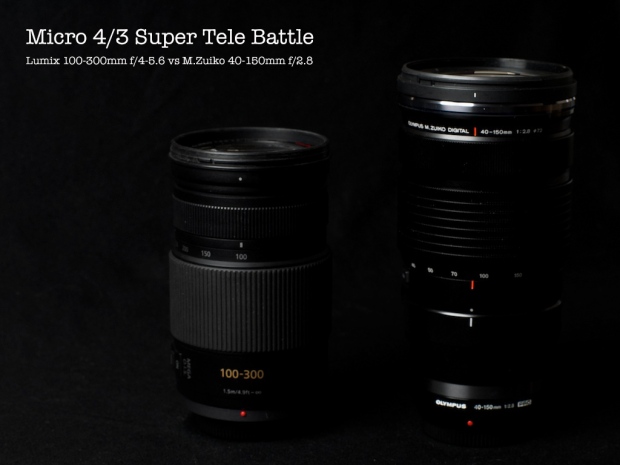







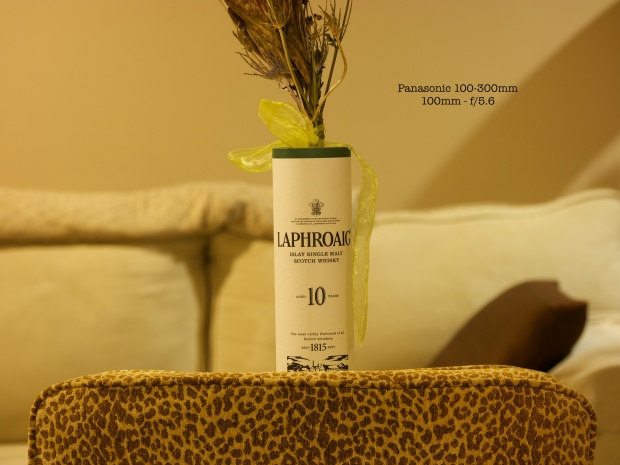



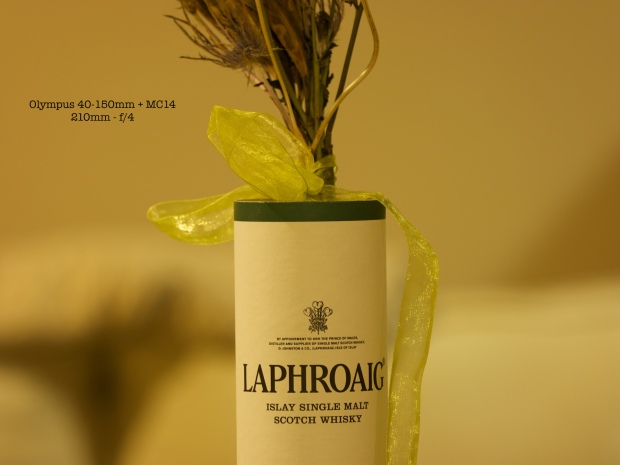








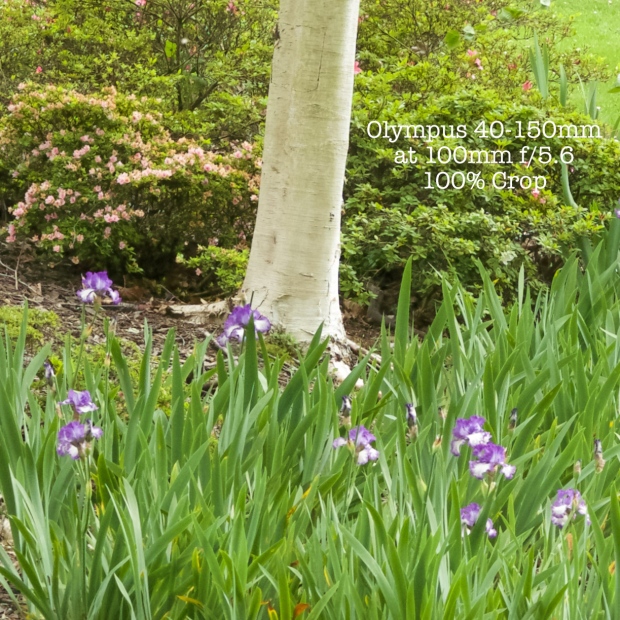







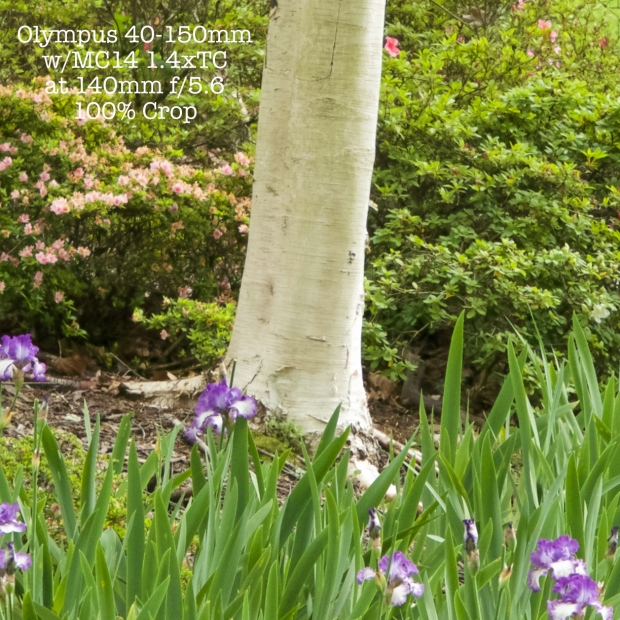




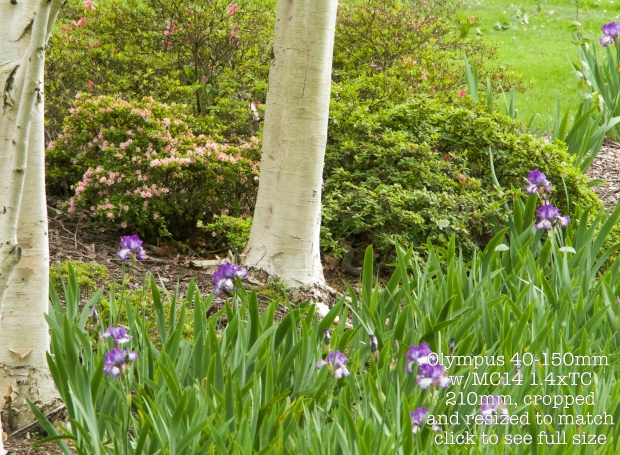

I just posted my initial thoughts on the 100-300 last weekend: http://capitalphotog.tumblr.com/post/116755682162/panasonic-100-300mm
I think I need a bit more experience to judge its strengths and weaknesses
LikeLike
Hi Dan,
Yeah, it’s a lens, like any super tele, that takes some getting used to to get the best out of it. The OIS is great, but still doesn’t account for any subject or environmental movement, and when racked out to 300mm, for any carbon based subject, I’d try to aim for 1/1000 sec. It’s a bit of a tradeoff when more than likely needing to push the ISO, but I’d rather have a noisy, sharp shot, than a clean, blurry shot, plus a good NR software can work wonders.
Thanks for the link and the comment.
t
LikeLike
After buying the Panasonic 45-200mm lens at a bargain price, I thought that there was no reason to buy an even more compromised lens like the 100-300mm. It seems that you’ve shown that it’s a good lens.
It’s odd, but after 10+ years of shooting high school sports, I’m shooting at skate parks and need wide lenses. You’ll probably think it strange but I’ve just bought a Pentax K-50 to see about getting wider angles.
LikeLike
I certainly wouldn’t consider the 100-300 compromised, at least in the same vein as the 45-200 which was absolutely developed as a cheap, second lens to accompany the 14-45 kit lens originally. The 100-300 is actually a very good lens from my experience, and while noticeably softer wide open at 300mm, it isn’t any worse than the 40-150+1.4xTC as shown. The largest downside, aside from the negligible softness at the tele end, is the relatively slow aperture. It will be interesting to see how the Oly 300mm f/4 lens performs, as it will certainly be substantially more expensive and only a stop faster. I guess we’ll have to wait to see.
As for the wide angle options, APS-C and FF systems will certainly have more options and variety available, although the fisheyes and UWA zooms for the m4/3 system seem to have at least provided a decent argument for itself.
Cheers,
t
LikeLike
yes the battle is unfair…I would want the 2,8 to shoot sports…but for everyday shooting the 100-300 holds up well . As to the Oly 75-300 vs the panny 100 to 300…I have rented both…I used them on my E-M1…and I will agree that I think the panasonic is a better lens for image quality but not that much better than the Oly…plus using the 100-300 on an Oly body the lens was very sluggish…and I was missing a lot of action shots…I put the 75-300 on the E-M1 and the focus was so much quicker…so I am of a mind…Oly on Oly and Panny on Panny….now as to super long reach…Nikon 1 70-300…which I think is an equivalent of 189-810…I shot that last weekend…for portraits and rugby…this blows all of these other 3 lenses out of the water in my opinion…but the only drawback is you have to shoot this system on a sunny day . Take care Tyson
LikeLike
Thanks Sven,
I often forget about the Nikon 1 system. What does that lens open up to though? f/5.6 is pretty hindering to begin with, but at that extreme focal length, I guess we can’t be too bothered 🙂
Thanks as always,
Tyson
LikeLike
I was in love with the Nikon 1 system for a couple of weeks. My 70-300 through the FT1 made amazing images at distance. But I got tired of the noisy sensor, which was just noisy enough to be a problem in daylight shots at low ISO. The m4/3 sensors (especially the newest generation) are almost competitive with APS-C and so offer the best quality/reach compromise for me. The 100-300 remains my favourite lens when at a zoo or walking in the woods.
LikeLike
I really feel, and have felt since it’s introduction, that the micro 4/3 system is the sweet spot as far as a “cropped” format is concerned. For me, it’s 90% of the IQ of full frame at half the weight and size. APS-C, for me, is the no-mans land as it is nearly as large and heavy as a FF setup (nearly) and while a slight bump in metrics vs m4/3 IQ wise, is a bump down from FF in equal measure. That said, I think many could (and probably should) see APS-C as a good compromise compared to potentially supporting two formats (m4/3 & FF) as I do. I find enough in each the m4/3 and FF formats to justify themselves in their own right though, and really, it’s hard to find a bad camera or system nowadays, regardless of the format. I think the Nikon1 was interesting, but ultimately too compromised, too consumer focused perhaps and Samsung, while solid, just never commanded a serious look by most people as we’d already found our place with other more established systems while also trying hard to attract snapshooters and weekend warriors with uninspiring, yet boringly good zooms. Fuji took a different tack, focusing on lens development mirroring that of the bygone film era, and followed it up with wonderful cameras to boot. Canon seems asleep at the wheel and totally resting on their laurels, and Nikon, similarly is playing it safe, but also largely dependent on Sony. Sony itself, while seeming like a DVD/Stereo company making cameras, has done very well at putting a ton of tech into each level of the alpha bodies, and has finally started to support that with good optics (albeit horribly overpriced in most cases) but the ability to adapt EF and F mount lenses, is continuing to steal Canikon’s lunch. It’s interesting and will continue to be, seeing where everything goes in the next couple years, and with micro 4/3, if Oly and Panasonic can hold off from totally cannibalizing each other, I feel they are in a really good spot in regard to offering a huge value within an amazingly diverse system for its age.
Exciting times, and a lot of fun to be a photographer right now 🙂
Thanks man.
tyson
LikeLike
I’ve always enjoyed your views and reviews. Thanks for another good and thorough analysis. I have neither lens, but enjoy reading about them. In the rare situation when I want something longer than the 35-100 or the kit 40-150, I’ll take an adapter and mount the old Oly 70-300 (regular FT lens) on my EM1. It’s pretty heavy by mFT standards, and sluggish for sure even with the PDAF pixels on the EM1. However, since it is likely not worth more than a couple hundred dollars on eBay, it represents good value.
LikeLike
Pingback: *Micro 4/3 Super Tele Battle, Lumix 100-300 vs ...
I bought the Oly 40-150mm with the 1.4x in kit form, (not sold in the US), from Tokyo for $1500 incld.
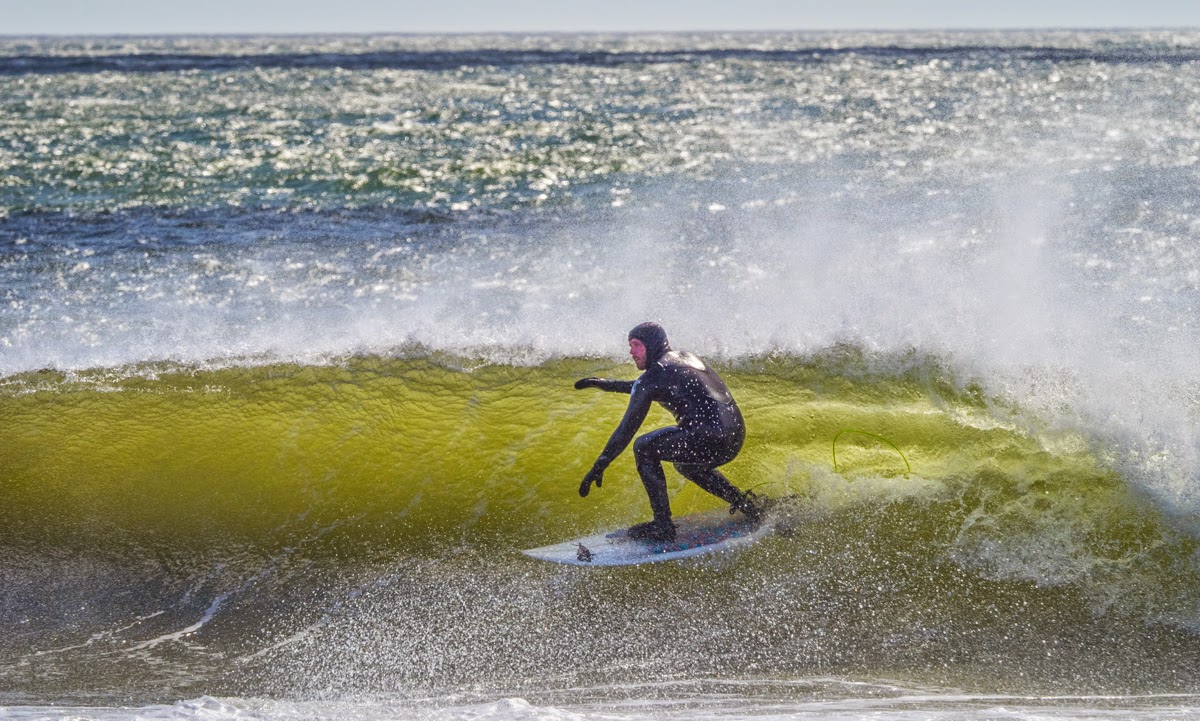
shipping. Still a hearty price tag….but I thought the combo was well worth it! …plus I am using an M1 and as others have mentioned, the focus may be quite a bit slower with the Panny 100-300 on my Oly. That would be a definite deal-breaker for me.
I love the versatility of the lens & tiny 1.4x. It’s fast to focus, has a fast f/stop and is just a well built, well engineered combo to have in my MFT lens quiver. Your review , as per usual has a very different “take” with this semi-miss-matched comparison…but it has definite interest for those who are deeply into the MFT system. I can’t wait to see the 300mm f/4 Oly!!! Can you say: “Hello, Tokyo”….LOL!
Here is a photo I recently shot with the 40-150mm & 1.4x.
LikeLike
I bought the Oly 40-150mm with the 1.4x in kit form, (not sold in the US), from Tokyo for $1500 incld.

shipping. Still a hearty price tag….but I thought the combo was well worth it! …plus I am using an M1 and as others have mentioned, the focus may be quite a bit slower with the Panny 100-300 on my Oly. That would be a definite deal-breaker for me.
I love the versatility of the lens & tiny 1.4x. It’s fast to focus, has a fast f/stop and is just a well built, well engineered combo to have in my MFT lens quiver. Your review , as per usual has a very different “take” with this semi-miss-matched comparison…but it has definite interest for those who are deeply into the MFT system. I can’t wait to see the 300mm f/4 Oly!!! Can you say: “Hello, Tokyo”….LOL!
Here is a photo I recently shot with the 40-150mm & 1.4x.
LikeLike
Hi Bob,
Thanks for the insight. $1500 for the 1.4xTC included is a great deal, all things considered. I’d agree for the most part, but when I originally tested and reviewed the 100-300, I did so with the OMD EM5, and while there were situations where I’m sure that lens on a Panasonic body would have benefited, I never found it to be much worse, if at all at AF operation. The biggest problem I remember was the blackout between frames making it really hard to visually track a subject’s movement when shooting at the longer focal lengths, and of course, tracking AF was a bit inconsistent. I’m not sure about the EM1, but I’d not say that I experienced any noticeable auto focus performance hinderance with the 100-300 on the EM5, compared to the GX7 for instance, myself.
While I’m sure that Oly>Oly or Pana>Pana will offer the best mating, I wouldn’t worry too much about it when making decisions on lenses for most all purposes as I’ve found many issues with AF to also exist with the same manufacturer’s lens on body, some of which that have driven me batty. I’d say it is more a lens issue, or at least has been in my experience, and when I see bodies as having a much shorter life span than the average lens, I’m more worried about how a lens performs on its own, than on one body or another. I’d hope that Oly and Pana continue to work together for the sake of the format (and both their bottom lines) to aim for the best integration between both manufacturers moving forward as I see it as crucial to the format’s continued and (hopefully) maintained success.
Thanks as always, man.
All the best,
Tyson
LikeLike
Thanks for giving us access to this sort of comparison. I especially keenly wanted to compare the final pair of images you posted. However, I get the impression that the focus points must be a bit different? The Lumix seems quite clearly sharper on the foreground leaves, but only on those leaves. What do you think the focus point is on the Olympus lens image?
LikeLike
Thanks GS! The point of focus was the tree, center frame. Perhaps because the Oly image is actually representing an area with fewer pixels, the perceived sharpness after resizing may be affected. That is what I’m seeing.
LikeLiked by 1 person
How about weight? I suspect that 2.8 8 heavy and the 100-300 (I’ve got and am happy with) while not a lightweight is probably appreciably lighter. For backpackers and travelers that 100-300 may fit the bill for that reason alone.
LikeLike
Hey Terry!
A huge difference, as one might imagine, and certainly for weight and overall size, the 100-300 will prove beneficial. Still, not a tiny lens, but it would be far less noticeable in the bag, for sure.
T
LikeLike
Thank you for your review.
IMO it goes to show one more time the minute differences expensive gear will make vs. best buy gear.
It’s all in, working best with what you have and knowing how to use it . GAS obsessions aside.
LikeLike
Yes, agreed. What this test doesn’t quite show though, and where a lot of the cost to the expensive gear is involved (with lenses anyway) is the ability to both shoot with faster shutter speeds at the same ISO by opening the aperture and then of course shallowing up the DOF if and when that effect is desired by way of at least two stops for any directly comparable focal lengths in this example.
At like aperture, the differences are minimal, definitely, and of course the Lumix lens offers the longest reach currently available (along with the Oly 75-300) for the system, and for the money, I still feel it is a super value.
Thanks Camaman!
t
LikeLike
Try the combination GX7 or GM5 + 75-300 on moving subjects.. It works much better in AFC mode than the 100-300.
LikeLike
I’ll admit, I have found AF-C (or C-AF in the Olys) to struggle with whichever lenses I’ve used for the system, and I have always found better, and more consistent results with S-AF/AF-S. The only real struggles I’ve dealt with is with quickly moving subjects traveling along a vertical path toward or away from my position, otherwise I can work around it. I cannot speak to the Oly 75-300’s ability or inability on one camera or another versus the 100-300, but if you see my 100-300 review (written a couple years ago) I was able to get it to do well enough to track kiteboarders, although, the blackout between frames on the OMD EM5 was painful to work with, especially when working at such long focal lengths.
Thanks Steve, if ever you’re able to do a side by side comparison showing the 75-300’s AF-C ability being better than the 100-300, I’d love to see it! Let me know.
Cheers,
Tyson
LikeLike
Tyson – An interesting perspective. I’m pretty sure the Olympus and teleconverter are not going to bruise my credit card anytime soon. A while back I performed a somewhat less rigorous test on the Panasonic 35-100, 45-175, 14-140 and 100-300. I couldn’t find enough difference to get excited about. As expected the 14-140 is probably the weakest of the crowd. It still is my favorite walking around lens on the GX-7. The 45-175 is a little less sharp at the long end but the compact size and light weight are really useful.
I recently used the 100-300 on a whale watching trip up here in Washington (no whales but lots of other wildlife). I set the ISO to Auto and shutter speed to the highest I could stand on the GH4. It worked well. A little more noise than I would like but I haven’t really worked too hard on the photos yet. Some out of focus or camera shake on some shots but overall OK. My main Grump! is that in the AFC mode it would continue to hunt. I uses AFS most of the time.
Rich
P.S. Kipon is supposed to be releasing an Canon EOS to micro 4/3 adapter that supports fast autofocus and aperture. This would give another option for really long lenses.
LikeLike
Thanks Rich!
Steve, just above suggests that the Oly 75-300 may perform better on the GX7 in AF-C mode, but I cannot speak to that. For all the m4/3 cams I’ve shot with so far, I’ve never felt the continuous, tracking AF was consistent enough to be useful, or more accurately, reliable, so I’ve always worked around it and shot single AF. This is one area where the angle of view being cropped, providing an effective lengthening of the focal length, coupled with the deeper DOF mathematically linked to the actual focal length can be beneficial allowing for a little more room to operate so to speak. I’ve shot with other mirrorless systems, and various cameras, and I’ve not yet seen one that does a consistently great job at tracking. To be fair, there are very few DSLRs that do a really good job at tracking AF though too, so while I do feel that PDAF is superior for this task, there still aren’t many systems out there that can consistently and reliably be called on to automatically follow and track movement.
As for the Kipon adapter, I know!!! I am going to pre-order one through Adorama, but my hopes are tempered. I’ve recently been shooting with the a7II and the Metabones smart adapter for EF lenses, and while very nice to have full electronic control and EXIF support, the AF operation is painfully slow. I expect the same with this new Kipon, and see it appealing to the filmies more than the still shooters, probably. Still though, having the ability to fully control EF lenses will be cool for me seeing as I have a pretty decent quiver of them lying around 🙂
Thanks again,
Tyson
LikeLike
I hope you plan to do a post on the Kipon when you have used it a little. With respect to the AF performance I did find that using AFS with the GH4 wasn’t a huge hinderance since most of my bursts were short and the focus is unlikely to change in the half second bursts.
My other grumble about the Panasonic AF is that it is poor with their Macro lenses, or the Olympus macro. I have them all including the new Panasonic 30mm. focus peaking is weak as well.
Rich
LikeLike
Hey Rich,
I’m trying to get a review unit currently and absolutely will do a review write up.
Regarding the macro lenses for the system, I came to a similar conclusion. After shooting the Oly 60 on the Oly OMDEM5, I realized that a focus by wire macro lens, on a contrast based AF system was horrible on both counts and have found the system to lack any proper, proprietary macro solution. While sharp, the Oly 60 was the worst lens in AF operation, and FBW being remarkably frustrating for closeup manual focus, that I’ve yet used in the m4/3 landscape. The best I’ve found has been an adapted FD 100mm macro lens which I’ve also found the focus peaking on the GX7 to do really well for me. Have you tried adjusting the sensitivity? That made a big difference for my keeper rate, especially for macro.
For real macro work, I feel a mechanical geared focus is crucial and so superior to a FBW lens. I’d find an older used FD, F or OM mount macro lens if you’re really wanting to do macro work for this, or any mirrorless system.
Cheers,
Tyson
LikeLike
Pingback: m43 sistem “süper zum” lens kapışması !.. | BLOG
Thank you for the review. Now I have a craving for that wisky:-)
LikeLike
…it’s always whisky time somewhere 🙂
LikeLike
Enjoyed your lens and converter reviews. Just purchased a 40-150 Pro a few days ago. One aspect that you might want to touch on would be the close focus capability – it is pretty amazing at full telephoto!
Below is link to an uncropped close up (just resized down for web).

LikeLike